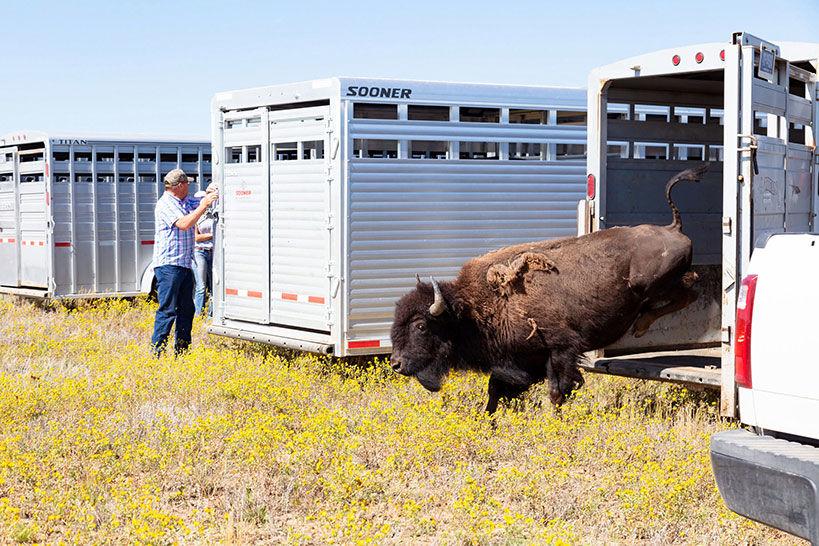Park bison delivered to Mont. reservation | Local News - Cody Enterprise

Interrupted and delayed by sabotage, an ambitious project to transfer Yellowstone National Park bison to Native American tribes on the Fort Peck Indian Reservation in Montana made a milestone leap forward with a delivery of 55 male animals Aug. 23.
Pushed for by Dan Wenk in the waning days of his administration as superintendent of the Park, the effort was carried forward by new superintendent Cam Sholly.
Sholly noted the transfer represented “the culmination of years of work” and cooperation among the National Park Service, the tribes, Montana and the Department of Agriculture’s Animal and Plant Health Inspection Service.
The Park Service, Sholly said, “is committed to expand and sustain this program.”
Giving away bison to peoples with historical connections to the herds is part of the plan to reduce the number of Yellowstone bison that must otherwise be culled each year to stay within Park population guidelines.
The Yellowstone herd, regarded as the last pure descendants of Plains bison nearly eradicated in the 1800s, is not supposed to exceed 3,500 animals. Bison can thrive so well in the Park they can approach 5,000.
The annual slaughters, which can target 600-900 bison per winter, have been controversial.
Two other major reasons for the transfer of bison to the Assiniboine and Sioux Tribes are to help restore cultural links and establish new herds of Plains bison.
It is said between 30 million and 60 million bison once lived on the Plains before they were nearly wiped out, due in part to the U.S. government encouraging the tactic in its war against Native Americans.
The first bison earmarked for Fort Peck were in quarantine at the Stephens Creek holding facility in early 2018, waiting to be declared as free of brucellosis before departing Yellowstone.
Early that year, while the bison were going through a waiting period, there were break-ins at Stephens Creek. On Jan. 16, 52 bison escaped after fencing was cut with bolt cutters.
About five weeks later, a similar incident occurred, with 73 of 96 quarantined bison leaving the pen and mingling with other Park bison.
Wenk, angered and surprised, ordered an increase in security.
Then others, saying they represented a group called Wild Buffalo Defense, chained themselves to fencing and were arrested and prosecuted.
The transfer process was slowed as the quarantine period had to begin anew.
The idea of using quarantine to alleviate worries infected bison would mingle with cattle and destroy herds was first broached in 2001. Quarantine rules were developed over a period of years.
Quarantine is a three-stage process. After being captured, bison are set aside for brucellois testing every 30-45 days.
If they prove brucellosis-free for two straight tests, they move to a second phase, involving testing based on age and gender.
Bison then can be transferred off their range land, as was done last week. The Fort Peck tribes now must perform six- and 12-month brucellosis tests before the bison can mix with other animals.
The arrival of the bison was greeted with excitement at Fort Peck. Tribal chairman Floyd Azure viewed the bison as a homecoming and as the beginning of something special.
“Yellowstone buffalo are important to tribes because they are the genetically pure descendants of the buffalo our ancestors lived with,” Azure said. “The return of the bison is a return of our culture.”
https://ift.tt/2zy6wX1

Comments
Post a Comment